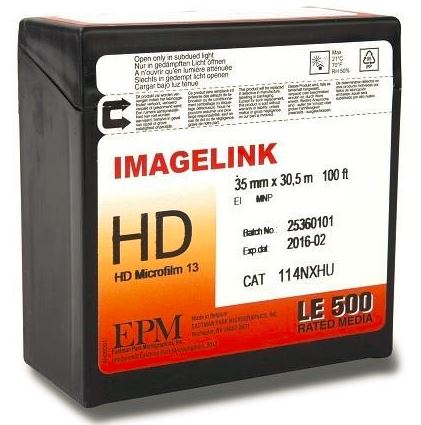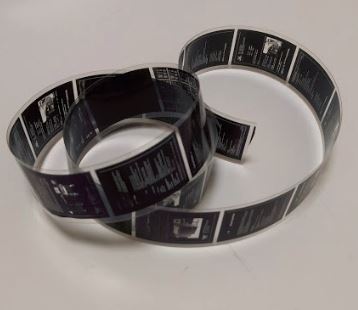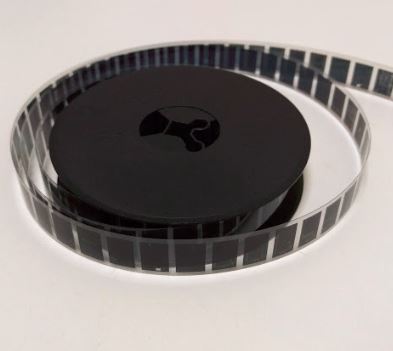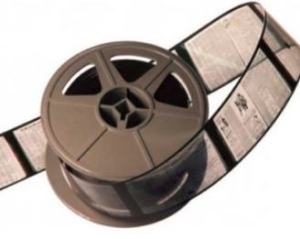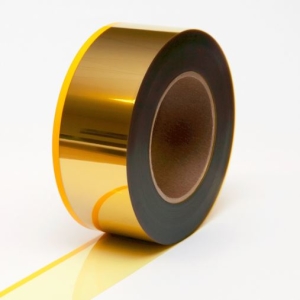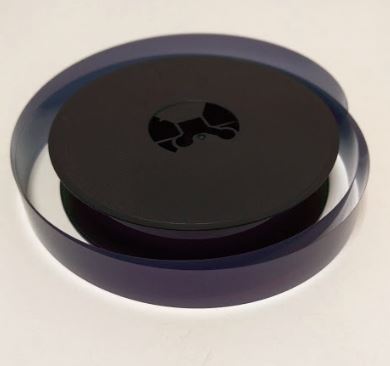The two current types of microfilm in use today, are microfilm and microfiche. Actually, they are considered microform technology. If they seemed a challenge in the past, going through this article will definitely answer most of your questions on the subject.
This major categories of microfilm are based on the form and shape of microform media. Microfilm comes as spooled on reels and microfiche comes in sheets. Based on purpose, films are 2 types: for writing and for duplicating. For more on microfilm check our article on what is microfilm.
When you want to write fresh information on microfilm, it requires either a silver halide film or a vesicular film. The first class of microform, the silver halide, writes both negative and positive images. The vesicular film writes information in positive but can be operated in daylight.
For duplicating purposes, besides the silver halide, the other type of microfilm is diazo. Diazo duplicating film is cheaper than other films, but its life expectancy is very short. Especially compared to a normal microfilm. Also, it is subject to quicker degradation.
The 3 major categories of microform
As we mentioned, microform comes in many kinds. These types are based, as mentioned, by the form factor and the type of material. Also, there is a separation between categories of microfilm based on the purpose of usage.
Types of microfilm based on form
The first type is microfilm. Microfilm is 16mm or 35mm in height. It comes in lengths of 30.5m or 66m. You can also find special 300m long rolls. Trust us, you won’t find them very often. Microfilm is long and manufacturers spool it on reels. You will find it much easier to handle microfilm rolls.
Of course, you must consider the fact that they can store over 5000 documents on a single roll. That is around 1.5m of shelve space. Based on form, microfilm is very good to store a lot of documents.
The second category of microform is microfiche. The microfiche is from the same exact material as microfilm. But in this case, it comes in sheets. Sheets are usually sized at 105mm by 148mm. One sheet can contain tenths of documents.
It does not have the same storage capacity as microfilm. It was never intended to store that many anyway. The intention is to store a decent amount of documents but still be able to be stored in folders easily. For example, patient folders can contain microfiche with the documents stored in that folder.
Types of microfilm based on material
Silver Halide Film – This type of film is the most sensitive film when it comes to light. But this sensitivity allows the capture of high resolution and density of original images. It uses a combination of a polyester base with a top of the silver emulsion. This is why it’s called silver halide. Most people will know this type of film from classic SLR cameras. Because the life expectancy is around 500 years, you should consider it archival film. It can offer both type of image polarity, negative and positive. When duplicating it produces a negative image.
Vesicular Film is a kind of film that can be handled in daylight and does not require wet processing. The microscopic dots or vesicles ( hence the name) combined in the body of the film form the image. Manufacturers say it costs less to produce. This should be seen in prices, but it all depends on where you get it from. You will find duplicators with vesicular film in libraries. They are used to duplicate films that are in high need. Such is this that users get the copy quickly and at a smaller cost.
Diazo films were once an alternative to silver film. Because Diazo films degrade quickly, they don’t have archival properties. This is the main reason why users have stopped using it and silver film is preferred instead. You might still find diazo duplicating machines in some places though. Suppliers still sell diazo film today, but it’s far from silver halide in quality.
Types of microfilm based on purpose
The types of microfilm based on purpose are split into two: Duplicating film and writing film.
Writing film is the film used for the transfer of digital files to microfilm. In this process, a microfilm writer burns images on film. Some writing films were burned on standard microfilm cameras. That process was much slower than with microfilm writers. The advantage of this process is that images burned are of the highest quality. This is truly archival material. It also has a longer life expectancy. Because it was written directly, it also keeps better over time.
The duplicating film is the film used to duplicate originals on microfilm. This type of film can be of the same origin as the writing film. Because the duplicating process is direct, the output quality is not that good. We always recommend that duplicating should be done with scanning and then rewriting of the microfilm. But for most cases, libraries and archives, the direct duplication is still a solution. This way, they can deliver the film to readers quite quickly.
Conclusions on types of microfilm
Microform is of different types, microfilm, microfiche silver, diazo or vesicular. But it always comes down to what your application is and budget. There is still a place for most of them, but as the domain shrinks, silver halide microfilm seems to remain the main one.
We also think silver halide microfilm will be the type of microfilm most used. The lower costs of manufacturing transfer to customers and users. Also, considering that the market in general for microfilm is shrinking, having many options is not economically feasible. So there will be a small number of players left in the market with more or less the same technology.
As for users, this could prove to be a good thing or a bad thing. For some using alternative technologies, it will mean investing in new equipment. For those using the technology left on the market, it will mean a decrease in prices and overall costs.
Kodak has an interesting milestones article which also shows what type of microfilm they have distributed over the years. Please keep in mind that the nature of microfilm you choose has to suit your microfilming project. For this we can offer you more indepth information.


